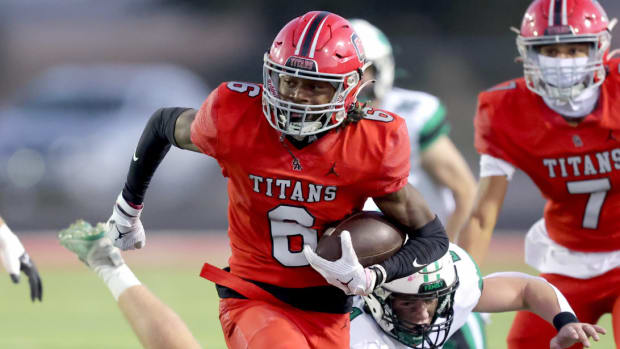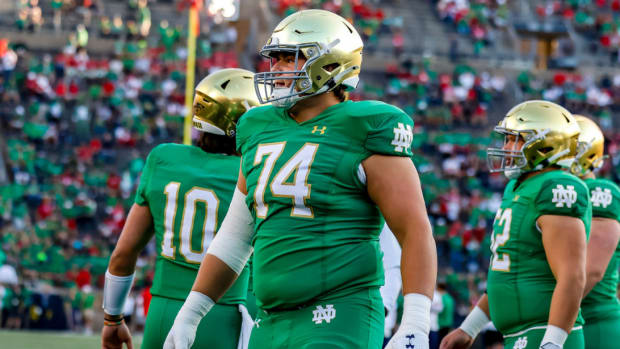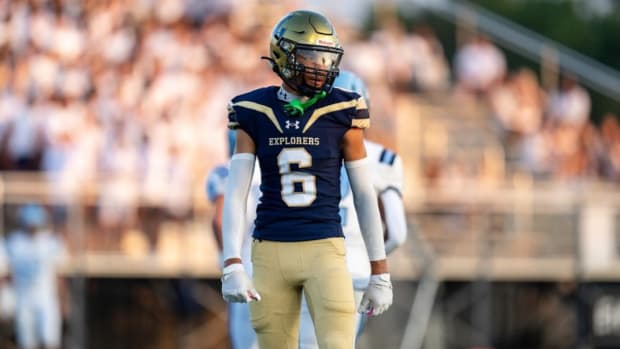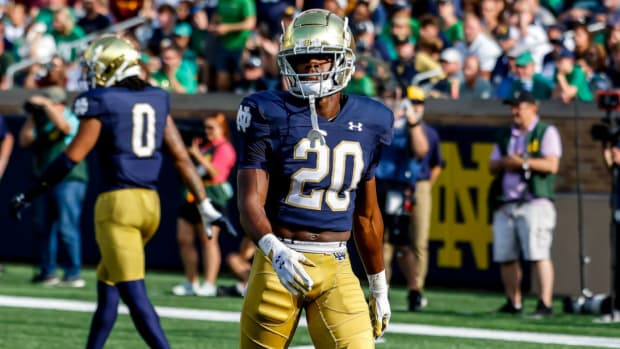Stopping The BC Ground Game Is Key For Notre Dame
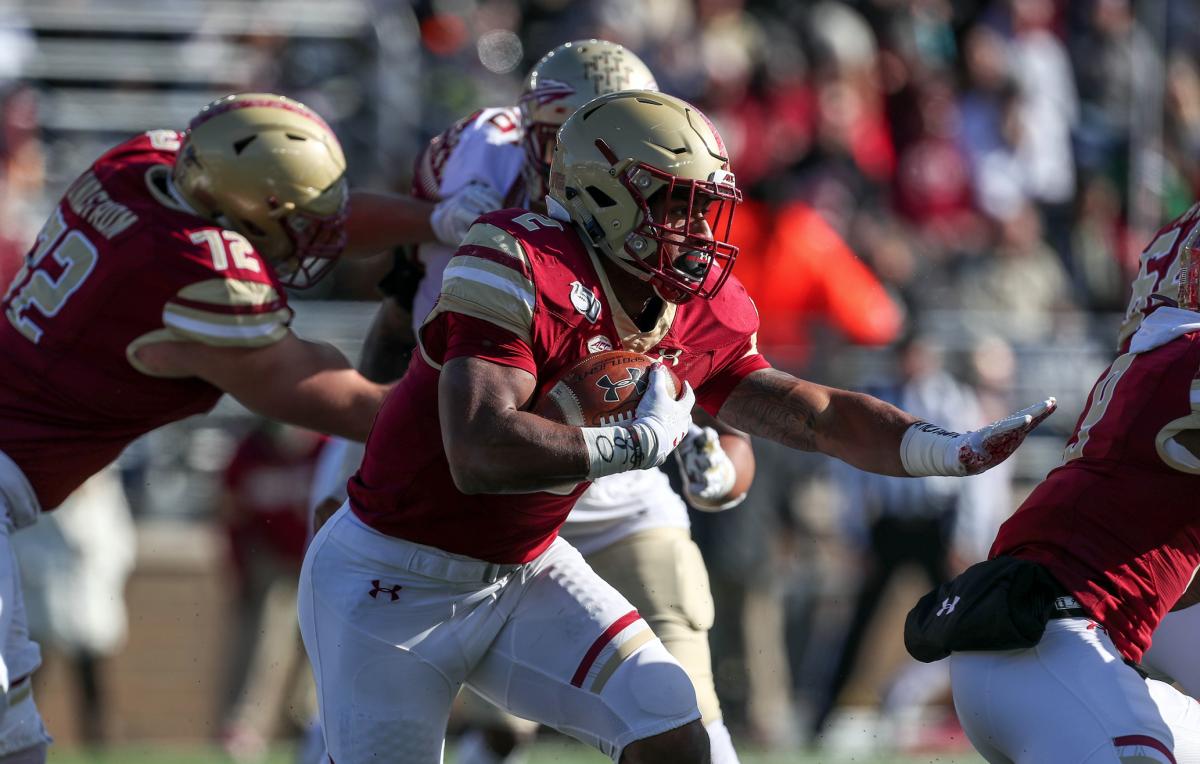
Stopping the run game is key to slowing down the Boston College offense.
Stopping the Boston College run game is much easier said than done.
Despite every opponent on the schedule knowing it must shut down the BC ground game, only one team - Clemson - has been able to stop it. Against its other nine opponents, Boston College has averaged 302.8 rushing yards per game and 5.6 yards per attempt.
Boston College has rushed for at least 228 yards in eight of its ten games and has two games with at least 429 yards. Since its starting quarterback went down, the Eagles have had rushing games of 496 yards (at Syracuse), 429 yards (vs. NC State) and 281 yards (vs. Florida State).
There are a number of reasons for BC’s success on the ground.
1. COMMITMENT — One thing I respect about the Boston College coaches is they are fully committed to being able to run the football on a game-by-game basis. Their entire game plan each week is built around establishing the ground attack.
If the offense struggles early or can’t get its footing, the BC coaches don’t panic and don’t abandon the run. They stick with it, making adjustments and find a way to get it on track.
Against NC State, for example, Boston College had just 49 rushing yards on 11 carries in the first quarter, with six of those carries going for three yards or less. Instead of going away from the ground game, Boston College kept plugging away, and over the next three quarters it racked up 380 rushing yards on 49 attempts (7.8 YPC).
2. DESIGNED FOR SUCCES — Boston College knows the ground game is key to its success, so everything it does is centered on the ground game. The BC coaches do a tremendous job using a variety of alignments, formations and motions to gain advantages.
One thing you can be sure to see is a game plan designed to create as many run lanes as possible. BC does that by using various formations to add players to the line of scrimmage. The more players that line up attached to or near the offensive line the more run gaps the offense creates, which makes more run gaps that defenses have to account for and defend.
You can see in this shot that Boston College is facing an 8-man box, but the two tight end formation and the reduced wide receiver has created nine gaps. Even with the heavy box alignment the NC State defense is in a tough spot.
Boston College will throw a heavy dose of tight end alignments at the defense. It often has at least two tight ends on the field. When Boston College goes with its heavy tight end alignments it adds to its ability to create extra run lanes.
You can see that here:
Not only does BC create the extra gaps, but it also used a tight end motion to get a lead blocker at the point of attack.
The formations and alignments can only go so far. In order for it to work, the line has to be good, and the BC blockers do a great job of keeping a body on a body and getting a push. The style of run game that BC employs and the talent it possesses at running back certainly helps, but BC’s ability to stay engaged and get a lean on defenders keeps those run lanes open.
Here’s what I’m talking about:
There is only one block I’d quality as outstanding on this play, but every BC blocker gets a body on a body, works their feet through contact and stays engaged. That allows RB AJ Dillon to patiently look for the hole and then get vertical when he sees the run lane. It also allows him to make as many moves as he needs.
3. DIVERSE GROUND GAME — Boston College uses a variety of runs to attack opponents. It will run at the overload side of the line, it will run away from the overload side, it will attack right up the middle, it will attack off tackle, it will stretch the defense and it will use pin-and-pull concepts to get outside and create run lanes.
BC will also use mis-direction runs, and the entire point of this variety is to keep defenses from keying on the run game. If teams overcommit to a side they are vulnerable to getting ripped if they guess wrong, or if they don’t control all the gaps.
Here’s an example:
BC goes away from its normal alignment looks and runs a sprint draw for a big play.
4. JET ACTION — BC will use jet action to slow down the defense from keying on the downhill runs. While the jet motions look good, they only work if the defense actually fears that the jet motion will result in a receiver getting the ball.
The player you’ll often see going in motion is freshman receiver Zay Flowers, who has 24 carries for 199 yards on the season. If you don’t respect when he goes in motion, your defense is vulnerable to getting ripped.
5. PLAY-ACTION CREATES BIG PLAYS — Boston College doesn’t pass much, especially since starting QB Anthony Brown went down with an injury. In the three games after Brown went down, BC threw the ball just 39 times and completed just 17 passes. In fact, Boston College ha four games this season where it completed fewer than 10 passes in a game.
To a degree, the Eagle pass game is used in similar fashion to how option offenses use it. They don’t rely on it as a key staple of the offense, instead using it as a counter to the run game in hopes of generating big plays.
Boston College ranks 10th in the nation in yards per completion and is 4th among Power 5 teams in that category. If you are too focused on the BC ground game you are susceptible to getting ripped with the play-action pass game.
The play-action has to be in the back of the minds of defensive backs, and if they think about it too much it helps the run game. Don’t think about it enough and it helps the pass game.
6. TALENT — Scheme is great, commitment is great, but having talent is really what makes the BC run game so good. AJ Dillon has already established himself as the all-time leading rusher in BC history. He’s one of the best backs in the entire country. When he’s not in the game, sophomore David Bailey can come in and rip teams up.
Follow me on Twitter: @CoachD178
Visit our Facebook page at: https://www.facebook.com/IrishMaven/




